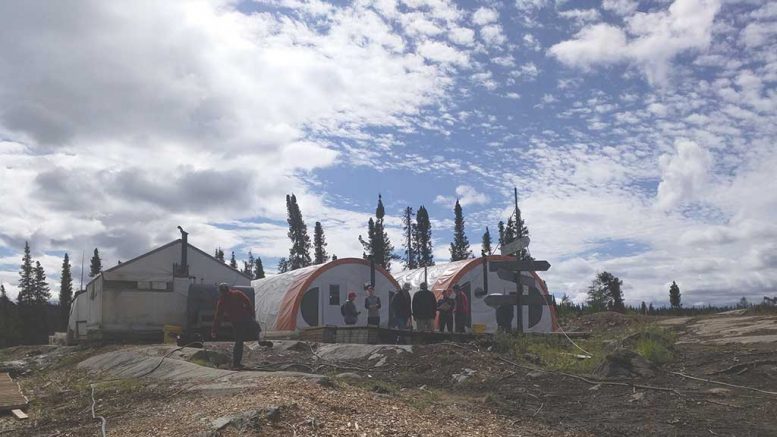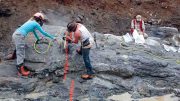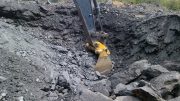Commerce Resources (TSXV: CCE; US-OTC: CMRZF) has spent the past 10 years developing its Ashram rare earth element (REE) project in northern Quebec. Like many REE miners, Commerce’s fate has been influenced by a strong Chinese supply chain, and, in particular, the prolific Bayan Obo REE mining district in northern China.
But company president Chris Grove says that recent U.S.-China politics may open a window for Commerce’s success. He points to the U.S.-imposed tariffs on Chinese goods and the 2019 U.S. Defense budget to demonstrate his case.
“The language specifically prohibits the Department of Defense from the purchase of Chinese REE magnets,” Grove tells The Northern Miner.
According to Grove, U.S. legislation allows the government to view Canadian resource projects as potentially “domestic,” if they are of interest to the U.S. Department of Defense.
As a result, the company has for the first time applied for a grant worth up to US$3 million from the Strategic Materials division of the U.S. Defense Logistics Agency to help develop Ashram.

A drill site on Commerce Resources’ Ashram REE project in 2011. Credit: Commerce Resources.
The company says it would use the grant to finish a pilot plant at Hazen Research in Golden, Colorado. It would use the plant to make samples of its REE hydroxide product to shop to processors in the U.S., like Ucore Rare Metals (TSXV: UCU; US-OTC: UURAF) in Utah and Rare Earth Salts in Nebraska.
Commerce is filling out another application for its Blue River tantalum and niobium project in British Columbia. Although China buys most of its niobium from external sources, Grove says it processes tantalum it buys from central Africa. As a result, he says the 2019 U.S. Defense budget could impact tantalum sales, as well.
Commerce hasn’t applied for either of the grants. The deadline for grant applications is Sept. 30, 2018.
The U.S.-China monthly trade deficit hit a record high in July when it totalled US$36.8 billion.
“This current move by the Trump government is turning up the heat exponentially,” Grove says. “The anxiety level is rising and the main outstanding question is: What is China going to do?”

Workers collect a bulk sample at Commerce Resources’ Eldor REE project in Quebec’s Nunavik region. Credit: Commerce Resources.
The Ashram project sits 130 km south of the town of Kuujjuaq in northern Quebec’s Nunavik area. It has 1.6 million measured tonnes grading 1.77% total rare earth oxides (TREO), 28 million indicated tonnes at 1.90% TREO and 220 million inferred tonnes at 1.88% TREO.
The company drilled nearly 10,000 metres at Ashram that it would incorporate into an updated resource estimate for a prefeasibility study. To do that, the company needs more capital.
Commerce finished a 2012 preliminary economic assessment on Ashram that pegged production at 16,850 tonnes of rare earth oxides per year over 25 years. It gave the project a $2.3-billion, pre-tax net present value at a 10% discount rate and a 44% pre-tax internal rate of return.
Two facilities in Quebec are processing material from Ashram in two programs financed by the Quebec government.
A $365,000 program at the University of Laval is using the Ashram sample to validate a hydrometallurgical process for extracting rare earth elements, as well as associated computer software.
A $300,000, three-year program at the National Institute of Scientific Research in Quebec City is optimizing tailings at Ashram. The program began two years ago.

Drill core at Commerce Resources’ Blue River tantalum-niobium project, 250 km north of Kamloops, British Columbia. Credit: Commerce Resources.
“Our material reacts extremely well to standard processing,” Grove says. “The majority of projects do not share the fundamentals of Bayan Obo, as we do.”
Commerce staked the initial Blue River project claims in 2000 — 230 km north of Kamloops, British Columbia. Between 2006 and 2011, it drilled nearly 60,000 metres into the property. It has spent more than $30 million at Blue River.
As of a 2013 estimate, the project contains 48.4 million indicated tonnes grading 197 parts per million tantalum oxide and 1,610 parts per million niobium oxide for 21 million lb. tantalum oxide and 171.5 million lb. niobium oxide. The project also has 5.4 million inferred tonnes at 191 parts per million tantalum oxide and 1,760 parts per million niobium oxide for 2.2 million lb. tantalum oxide and 21.1 million lb. niobium oxide.
Shares of Commerce are trading at 6¢ with a 52-week range of 5¢ to 10¢. The company has an $18-million market capitalization.
“Rare earth elements are a very weird commodity,” Grove says. They’re not rare. Economic deposits are rare. If you compare favourably to Bayan Obo, then you’ve got a legitimate shot at success.”






Be the first to comment on "Commerce hopes new US policy will benefit rare earth projects"